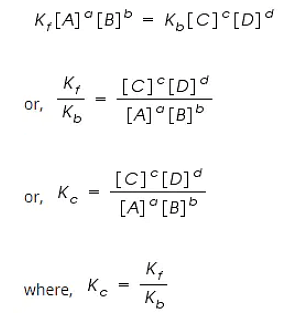A solution containing 18.25g of HCL and 500g of water. Find molality.
Solution and Explanation
Molality (m)=Mass of solvent in kg
No. of mass of solute
Molality =5000.5×1000=1m
Top Questions on Solutions
- A molecule X associates in a given solvent as per the following equation:
X ⇌ (X)n
For a given concentration of X, the van’t Hoff factor was found to be 0.80 and the
fraction of associated molecules was 0.3. The correct value of ‘n’ is: - Mass of ethylene glycol (antifreeze) to be added to 18.6 kg of water to protect the freezing point at $-24^\circ C$ is ____ kg (Molar mass in g mol$^{-1}$ for ethylene glycol = 62, $K_f$ of water = 1.86 K kg mol$^{-1}$).
- The density of 'x' M solution ('x' molar) of NaOH is \(1.12 \, \text{g/mL}\). While in molality, the concentration of the solution is \(3 \, \text{m}\) (3 molal). Then x is:
Given: Molar mass of NaOH is \(40 \, \text{g/mol}\) - During the detection of acidic radical present in a salt, a student gets a pale yellow precipitate soluble with difficulty in $\text{NH}_4\text{OH}$ solution when sodium carbonate extract was first acidified with dil. $\text{HNO}_3$ and then $\text{AgNO}_3$ solution was added. This indicates the presence of:
- The Molarity (M) of an aqueous solution containing \( 5.85 \, \text{g} \) of \( \text{NaCl} \) in \( 500 \, \text{mL} \) water is:
(Given: Molar Mass \( \text{Na} = 23 \) and \( \text{Cl} = 35.5 \, \text{g mol}^{-1} \))
Questions Asked in AP EAMCET exam
Six coins tossed simultaneously then find the probability of getting at least 4 heads.
- AP EAMCET - 2023
- Probability
- In the chessboard if the rectangle form is 1296, find the total number of squares formed.
- AP EAMCET - 2023
- Coordinate Geometry
Find the products formed if chlorine reacts with the cold and dilute sodium hydroxide solution.
- AP EAMCET - 2023
- Chemical Reactions
- Find the coefficient of \(\frac{y^3}{x^8}\) in \((x+y)^{-5}\) ?
- AP EAMCET - 2023
- Binomial theorem
- Which compound is gem-dihalide?
- AP EAMCET - 2023
- Organic Chemistry- Some Basic Principles and Techniques
Concepts Used:
Law of Chemical Equilibrium
Law of Chemical Equilibrium states that at a constant temperature, the rate of a chemical reaction is directly proportional to the product of the molar concentrations of the reactants each raised to a power equal to the corresponding stoichiometric coefficients as represented by the balanced chemical equation.
Let us consider a general reversible reaction;
A+B ↔ C+D
After some time, there is a reduction in reactants A and B and an accumulation of the products C and D. As a result, the rate of the forward reaction decreases and that of backward reaction increases.
Eventually, the two reactions occur at the same rate and a state of equilibrium is attained.
By applying the Law of Mass Action;
The rate of forward reaction;
Rf = Kf [A]a [B]b
The rate of backward reaction;
Rb = Kb [C]c [D]d
Where,
[A], [B], [C] and [D] are the concentrations of A, B, C and D at equilibrium respectively.
a, b, c, and d are the stoichiometric coefficients of A, B, C and D respectively.
Kf and Kb are the rate constants of forward and backward reactions.
However, at equilibrium,
Rate of forward reaction = Rate of backward reaction.

Kc is called the equilibrium constant expressed in terms of molar concentrations.
The above equation is known as the equation of Law of Chemical Equilibrium.



